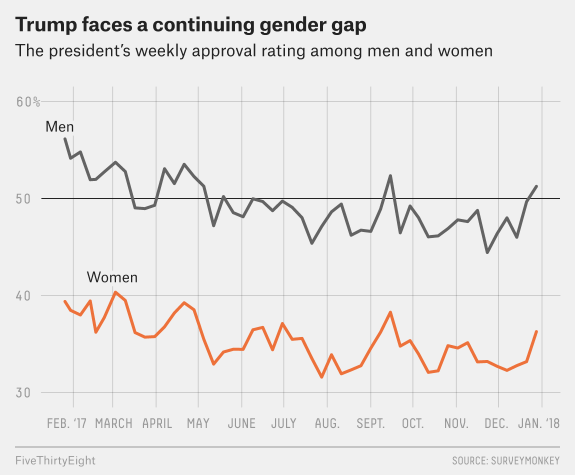
19 Inference About Proportions
What we learned so far are the inference methods for population means and variances that are from normal distributions. Our sample data are numerical values. What if our data are categorical, for example, gender, approval or not, etc? In this chapter, we are talk about inference about proportions. When we have categorical data, we are often interested in the proportion of some category of the categorical variable. We may wonder if the proportion of female is greater than 40% for statistics major students. We may also want to estimate the true proportion of the voters who votes for candidate A before all the votes are tallied.
19.1 Categorical Data
One Categorical Variable with Two Categories
We start with one categorical variable with two categories. Let
| Subject | Male | Female |
|---|---|---|
| 1 | x | |
| 2 | x | |
| x |
When we collect the categorical data, usually we are interested in their count. We wonder which category has more counts than the other. So we can make a one-way frequency/count table as follows. It is one-way because the count table is for one categorical variable only. Here in the data there are
| Count | |
|---|---|
| Male | |
| Female |
Now the number of males or the proportion of males can be viewed as a random variable because the count,
One question for you. What probability distribution might be appropriate for the count,
Probability Distribution for Count Data: Two Levels
In our example, each subject is either Male or Female, and with the fixed sample size, we wonder how many subjects are Males. Any probability distribution comes into your mind? Well,
- Fixed number of trials: We can view each sampled subject as one trial in the experiment, and we have fixed
- Each trial results in one of two outcomes. Clearly, in our survey, there are only two possible answers. Each subject is either Male or Females.
- Trials are independent. If the subjects are randomly sampled, the students in the sample are independent.
- The probability of success
The count
Do we know
19.2 Inference for a Single Proportion
Hypothesis Testing for
The point estimator for the population proportion
Step 0: Method Assumptions
- The method requires that
Step 1: Set the Null and Alternative Hypothesis
- We are interested in the proportion of some category being equal to, greater than or less than some value.
Step 2: Set the Significance Level,
Step 3: Calculate the Test Statistic
- With the central limit theorem, it can be shown that the sampling distribution of the statistic
Step 4-c: Find the Critical Value
- Same as before.
Step 5-c: Draw a Conclusion Using Critical Value Method
-
-
-
Step 6: Restate the Conclusion in Nontechnical Terms, and Address the Original Claim
Confidence Interval for
To construct the confidence interval for
The
Such normal approximation interval is called the Wald interval.
Example: Exit Poll
Suppose we collect data on 1,000 voters in an election with only two candidates, R and D, and every voter must vote for either one of them.
| Voter | R | D |
|---|---|---|
| 1 | x | |
| 2 | x | |
| 1000 | x |

Based on the data, we want to predict who won the election. Let
Hypothesis Testing
Step 0
-
Step 1
-
R won the election means that the proportion of all voters voting for R is greater than 50%.
Step 2
Step 3
Step 4-c
Step 5-c
- Reject
- Since
Step 6
We do not have sufficient evidence to conclude that R won.
We make the same conclusion using the
Confidence Interval
First we check the assumption: +
- Estimate the proportion of all voters that voted for R using a 95% confidence interval.
To perform the one-sample proportion prop.test(). The argument correct tells us whether or not we want to do continuity correction. Our method here does not do continuity correction. It does not matter much when our method assumption is satisfied.
To obtain the confidence interval, we should set alternative = "two.sided" because the interval is two sided. Be careful. The interval we learn is the Wald interval. However, the interval from the prop.test() output is not the Wald interval, but the so-called Wilson interval. There are lots of variants of confidence intervals for binomial proportions, and one can use the BinomCI() function in the DescTools package to obtain them.
## one proportion test using normal approximation
(prop_test_res <- prop.test(x = 520, n = 1000, p = 0.5, alternative = "greater",
correct = FALSE))
1-sample proportions test without continuity correction
data: 520 out of 1000, null probability 0.5
X-squared = 1.6, df = 1, p-value = 0.103
alternative hypothesis: true p is greater than 0.5
95 percent confidence interval:
0.4939945 1.0000000
sample estimates:
p
0.52 # Use alternative = "two.sided" to get CI
prop_ci <- prop.test(x = 520, n = 1000, p = 0.5,
alternative = "two.sided", correct = FALSE)
prop_ci$conf.int[1] 0.4890177 0.5508292
attr(,"conf.level")
[1] 0.95## The Wilson interval and Wald interval
DescTools::BinomCI(x = 520, n = 1000, method = "wilson") est lwr.ci upr.ci
[1,] 0.52 0.4890177 0.5508292DescTools::BinomCI(x = 520, n = 1000, method = "wald") est lwr.ci upr.ci
[1,] 0.52 0.4890351 0.5509649Doing inference with normal approximation to binomial variables is more complicated than what we discuss here. The main reason is that we use a continuous normal distribution to approximate a discrete binomial distribution. Check the Wiki page if you don’t believe it. No worries at this moment unless you want to be a statistician doing research in this field!
If you look at the proportion test output carefully, you’ll find that the test statistic is a chi-squared test statistic, not the
z_test <- (0.52 - 0.5) / sqrt((0.52)*0.48 / 1000)
z_test ^ 2[1] 1.602564prop_test_res$statisticX-squared
1.6 The method we learn here uses normal approximation to binomial variables. One can also perform the exact binomial test that directly uses binomial probabilities to calculate the
We can use binom.test() function to perform the exact binomial test. The page discusses the relationship between the exact binomial test and other methods.
## exact binom test
binom.test(x = 520, n = 1000, p = 0.5, alternative = "greater")
Exact binomial test
data: 520 and 1000
number of successes = 520, number of trials = 1000, p-value = 0.1087
alternative hypothesis: true probability of success is greater than 0.5
95 percent confidence interval:
0.4934948 1.0000000
sample estimates:
probability of success
0.52 ## confidence interval
bi <- binom.test(x = 520, n = 1000, p = 0.5, alternative = "two.sided")
bi$conf.int[1] 0.4885149 0.5513671
attr(,"conf.level")
[1] 0.95It needs a bit extra work to perform the one-sample proportion scipy.stats does not provide any function for the test. Unless you want to calculate and do the test step by step, we can use the function proportions_ztest() provided in the package statsmodels. In RStudio, with the R reticulate package, we can install the Python package in our R session using the command py_install("statsmodels").
import numpy as np
import statsmodels.api as sm
from statsmodels.stats.proportion import proportions_ztest, proportion_confintThe argument value in proportions_ztest() is the value of the null hypothesis equal to the proportion.
# One proportion z-test using normal approximation
z_prop_stat, pval = proportions_ztest(count=520, nobs=1000, value=0.5, alternative='larger')
z_prop_stat1.2659242088545843pval0.1027701091113093The first returned value is the test statistic for the z-test, and the second is the p-value. Note that when we specify the alternative, we use the word ‘larger’, not ‘greater’ that is used in the functions provided by scipy.stats, ttest_rel() for example.
To obtain the confidence interval, we use proportion_confint(). The method is set to be ‘normal’ because we are doing normal approximation. The interval we learn is the Wald interval.
prop_ci = proportion_confint(count=520, nobs=1000, alpha=0.05, method='normal')
prop_ci(0.48903505011072596, 0.5509649498892741)There are lots of variants of confidence intervals for binomial proportions that can be specified through the method argument
# normal : asymptotic normal approximation
#
# agresti_coull : Agresti-Coull interval
#
# beta : Clopper-Pearson interval based on Beta distribution
#
# wilson : Wilson Score interval
#
# jeffreys : Jeffreys Bayesian Interval
#
# binom_test : Numerical inversion of binom_testFor example,
ci_wilson = proportion_confint(count=520, nobs=1000, alpha=0.05, method='wilson')
ci_wilson(0.4890177246575191, 0.5508292050030589)Doing inference with normal approximation to binomial variables is more complicated than what we discuss here. The main reason is that we use a continuous normal distribution to approximate a discrete binomial distribution. Check the Wiki page if you don’t believe it. No worries at this moment unless you want to be a statistician doing research in this field!
The method we learn here uses normal approximation to binomial variables. One can also perform the exact binomial test that directly uses binomial probabilities to calculate the
We can use binomtest() function in scipy.stats to perform the exact binomial test. The page discusses the relationship between the exact binomial test and other methods. Note that when confidence interval is calculated, the alternative shoud be two-sided.
from scipy.stats import binomtest
binom_test_res = binomtest(k=520, n=1000, p=0.5, alternative='greater')
binom_test_res.statistic0.52binom_test_res.pvalue0.10872414660207055binom_test_ci = binomtest(k=520, n=1000, p=0.5, alternative='two-sided')
binom_test_ci.proportion_ci(confidence_level=0.95, method='exact')ConfidenceInterval(low=0.4885148824521465, high=0.551367057305466)Also be careful that the proportion_confint() from statsmodels can generate the confidence interval of a binomial test with method='binom_test'. However, its result is not the same as the one shown before.
# from statsmodels
from statsmodels.stats.proportion import binom_test
binom_test(count=520, nobs=1000, prop=0.5, alternative='larger')0.10872414660207055ci_binom = proportion_confint(count=520, nobs=1000, alpha=0.05, method='binom_test')
ci_binom(0.48899690054625045, 0.5510150259185691)19.3 Inference for Two Proportions
Many times we want to compare two population proportions, say
| Group 1 | Group 2 |
|---|---|
|
|
|
|
|
|
-
-

Hypothesis Testing for
The method introduced here is based on the central limit theorem and normal approximation to binomial distribution. The idea is similar to the one sample proportion
Step 0: Check Method Assumptions
- In order to perform the
Step 1: Set the Null and Alternative Hypothesis
Step 2: Set the Significance Level,
Step 3: Calculate the Test Statistic
- It can be shown that
Step 4-c: Find the Critical Value
Same before.
Step 5-c: Draw a Conclusion Using Critical Value Method
-
Reject
-
-
-
-
Step 6: Restate the Conclusion in Nontechnical Terms, and Address the Original Claim
Confidence Interval for
To get the Wald confidence interval for
The
There is no pooled estimate
Example: Effectiveness of Learning
Suppose we do a study on 300 students to compare the effectiveness of learning statistics in online vs. in-person programs. We randomly assign 125 students to the online program, and the remaining 175 to the in-person program. The exam results are shown in the table below.

| Exam Results | Online Instruction | In-Person Instruction |
|---|---|---|
| Pass | 94 | 113 |
| Fail | 31 | 62 |
| Total | 125 | 175 |
Is there sufficient evidence to conclude that the online program is more effective than the traditional in-person program at
Hypothesis Testing
Step 0
-
-
The assumptions are satisfied.
Step 1
- Let
Step 2
Step 3
Step 4-c
Step 5-c
- Reject
- Since
Step 6
- We have sufficient evidence to conclude that the online program is more effective.
Confidence Interval
We want to know how effective the online program is, so we estimate
Because 0 is not included in this interval, we reach the same conclusion as the hypothesis testing.
Below is a demonstration of how to make inferences about two proportions in R. We still use prop.test() function, but here we provide the number of successes and the number of trials in the arguments x and n respectively as a vector whose first element is for the first group and second element for the second group. Please be consistent with the order and don’t mess up.
(prop_test2 <- prop.test(x = c(94, 113), n = c(125, 175),
alternative = "greater", correct = FALSE))
2-sample test for equality of proportions without continuity correction
data: c(94, 113) out of c(125, 175)
X-squared = 3.8509, df = 1, p-value = 0.02486
alternative hypothesis: greater
95 percent confidence interval:
0.01926052 1.00000000
sample estimates:
prop 1 prop 2
0.7520000 0.6457143 prop_ci2 <- prop.test(x = c(94, 113), n = c(125, 175),
alternative = "two.sided", correct = FALSE)
prop_ci2$conf.int[1] 0.002588801 0.209982628
attr(,"conf.level")
[1] 0.95The two sample proportion
pi_bar <- (94 + 113)/(125 + 175)
pi_1_hat <- 94/125
pi_2_hat <- 113/175
z_test2 <- (pi_1_hat - pi_2_hat) / (sqrt(pi_bar*(1-pi_bar)*(1/125+1/175)))
z_test2 ^ 2[1] 3.850932prop_test2$statisticX-squared
3.850932 Below is a demonstration of how to make inferences about two proportions in Python. We still use proportions_ztest() function, but here we provide the number of successes and the number of trials in the arguments count and nobs respectively as an array whose first element is for the first group and second element for the second group. Please be consistent with the order and don’t mess up.
# Two proportion Z-test
# One-tailed test
z_test_stat, p_val = proportions_ztest(count=np.array([94, 113]),
nobs=np.array([125, 175]),
alternative='larger')
z_test_stat1.9623790859613837p_val0.024859182908509945However, if we use proportion_confint() for calculating the confidence interval for the mean difference of two proportions, the results do not match what the formula show. proportion_confint() actually calculate two CIs, one for each proportion.
ci_low, ci_upp = proportion_confint(count=np.array([94, 113]),
nobs=np.array([125, 175]),
alpha=0.05,
method='normal')
ci_lowarray([0.67629443, 0.57485022])ci_upparray([0.82770557, 0.71657835])We are actually comparing proportions of two independent binomial samples. In Python, test_proportions_2indep() and confint_proportions_2indep() help us test whether the two proportions are equal or one is greater than the other, and provide CI for the proportion difference.
from statsmodels.stats.proportion import test_proportions_2indep
test_prop_2ind_res = test_proportions_2indep(
count1=94, nobs1=125, count2=113, nobs2=175,
compare='diff', alternative='larger', correction=False,
method='score')
test_prop_2ind_res.statistic1.9623790859613837test_prop_2ind_res.pvalue0.024859182908509945We see that there are several arguments that controls how the test should be performed. The option correction=False and method='score' matches the results obtained from the formula. We don’t need to worry too much which method we should use at this moment. Although different options give us different test statistics and p-value, the difference is small, and the conclusion usually remain the same.
Our confidence interval is a Wald interval, and method='wald'. It does not matter whether correction is true or false. Again, there are several difference methods for calculating confidence intervals. Their difference is not large, and the conclusion stays the same most of the time.
from statsmodels.stats.proportion import confint_proportions_2indep
confint_proportions_2indep(count1=94, nobs1=125, count2=113, nobs2=175,
compare='diff', method='wald', correction=True)(0.002588800743036121, 0.2099826278283925)confint_proportions_2indep(count1=94, nobs1=125, count2=113, nobs2=175,
compare='diff', method='wald', correction=False)(0.002588800743036121, 0.2099826278283925)19.4 Exercises
- Lipitor (atorvastatin) is a drug used to control cholesterol. In clinical trials of Lipitor, 98 subjects were treated with Lipitor and 245 subjects were given a placebo. Among those treated with Lipitor, 6 developed infections. Among those given a placebo, 24 developed infections. Use a 0.05 significance level to test the claim that the rate of inflections was the same for those treated with Lipitor and those given a placebo.
- Test the claim using the critical-value and p-value methods.
- Test the claim by constructing a confidence interval.